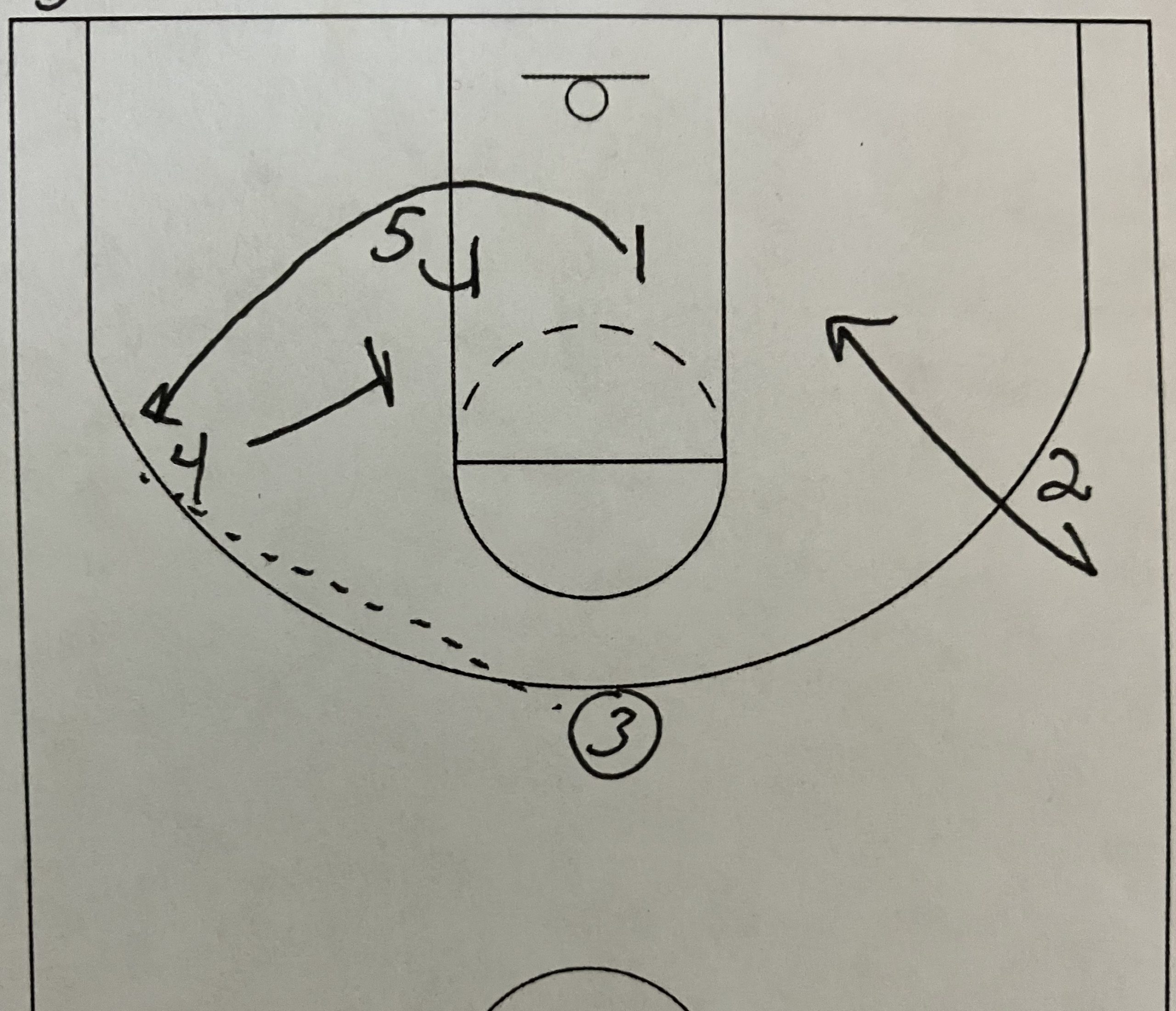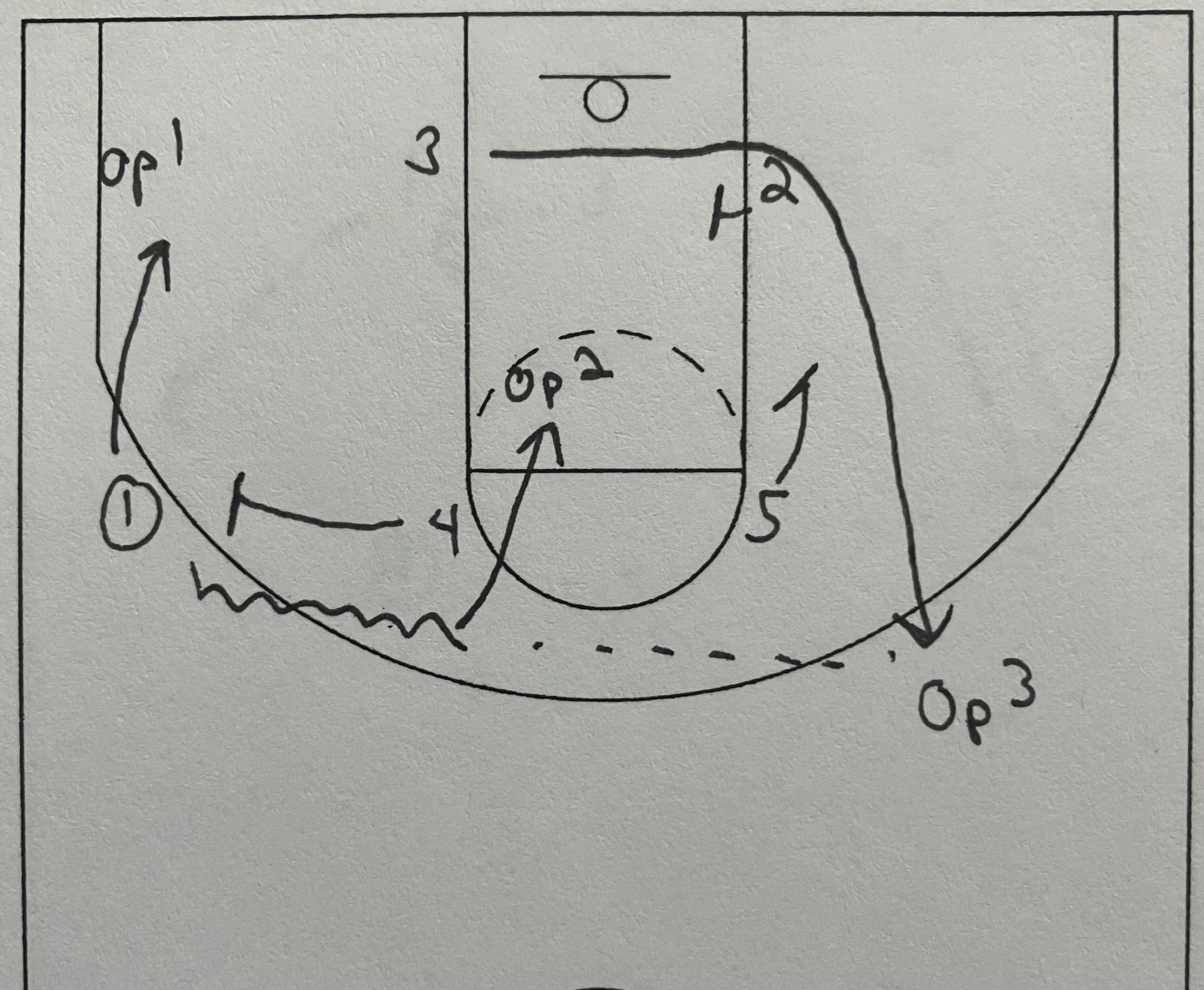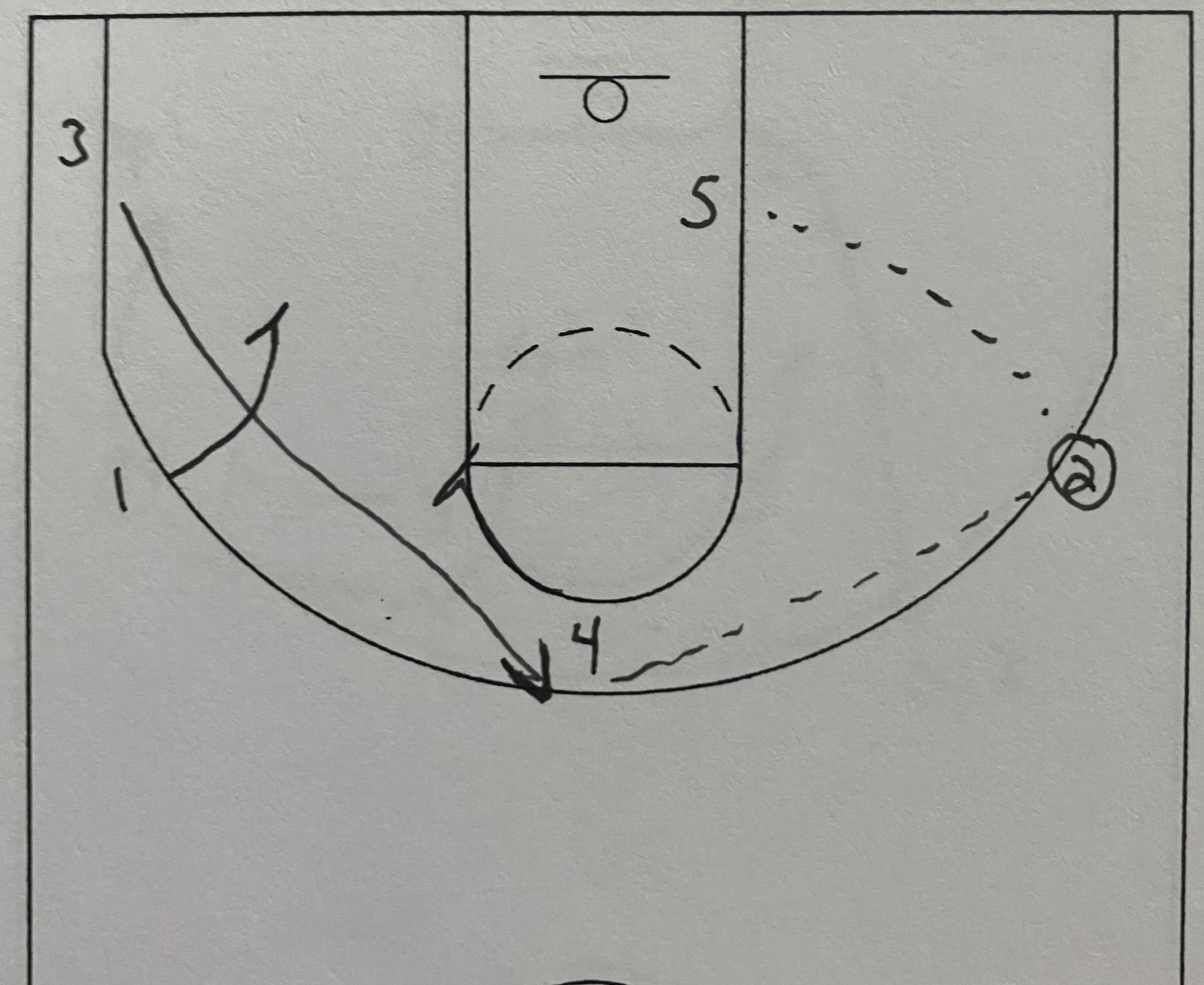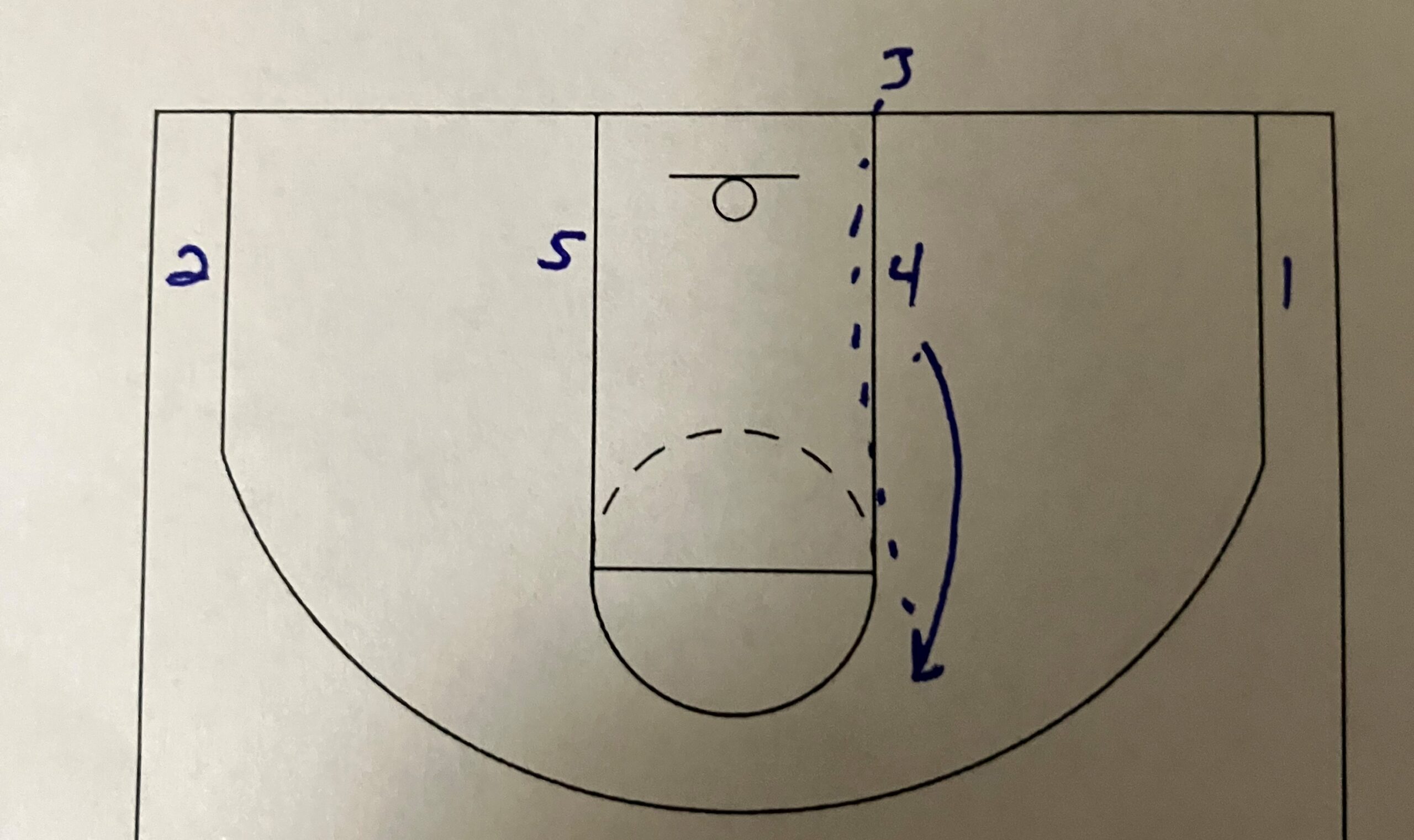A good shooting point guard is a great advantage to an offense. But being a point guard, they are going to have the ball in their hands a lot of the time. An offense can utilize a sniper point guard by getting the ball out of their hands and bringing them back to the ball off of some screens. Teams should help their point guards by letting the offense create shots for them rather than having the point guard create all their own shots.
Plays that have a point guard start a play, get away from the ball, and come back to the ball are a great addition to any playbook. A team should have 2 or 3 plays that help get open shots for a point guard when they are one of the main scorers on the team. This gives them a chance to get good shots without having to create their own shots.
This play has a chance to get a post isolation to start but ends with a point guard coming off of a stagger screen. This creates multiple options and multiple chances to score so the defense cannot overplay one action. This gives the players the ability to play the game and not just running to and from spots to get through the play.
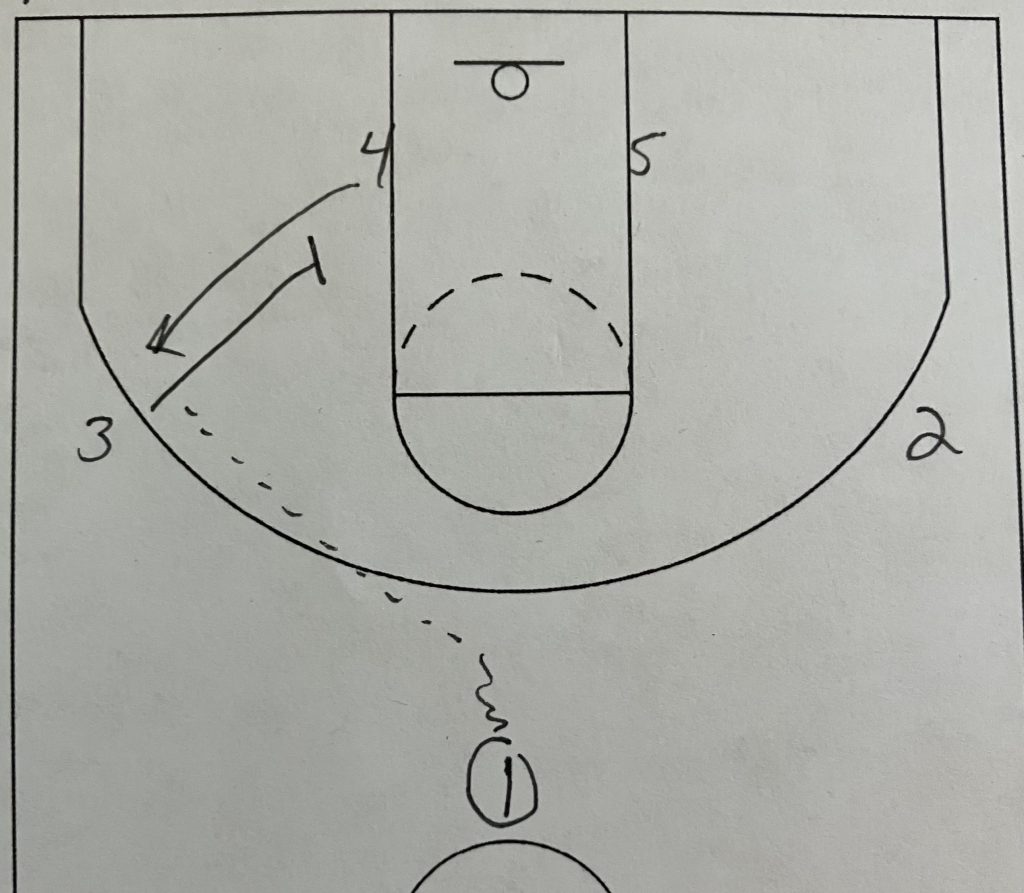
The play starts out in a 3-out 2-in formation. It starts in the standard setup of the guards on the outside and the post on the inside. The initial motion is a down screen by the forward(3) for the big(4) and an entry pass to the wing. This does mean the big(4) will be handling the ball on the outside.
I want the downscreen to begin the play because I want the wing on the inside for the 2nd action. This play can be ran to either side. Everything will flip if the downscreen and entry pass goes to the other side.

The first option to score is a block to block screen. The forward(3) is continuing across the lane and screening for the center(5). The initial downscreen puts the forward(3) as the screener on the block to block screen.
The forward(3) screening for the center(5) makes it harder for the defense to defend the screen. A big(4) to center(5) screen gives the defense the ability to just switch the screen. A switch makes it hard for the post entry pass. A forward(3) to center(5) screen means the defense is not likely to just switch the screen.
The center(5)’s defender now must work through the cross screen. If the forward(3) can get a good screen for the center(5), then the center(5) can come across the lane open. The big(4) can read this and if the center(5) is open from the screen, then a post entry pass is made and the center(5) can catch and score.
If the center(5) is not open, then the play will move into the next movement.
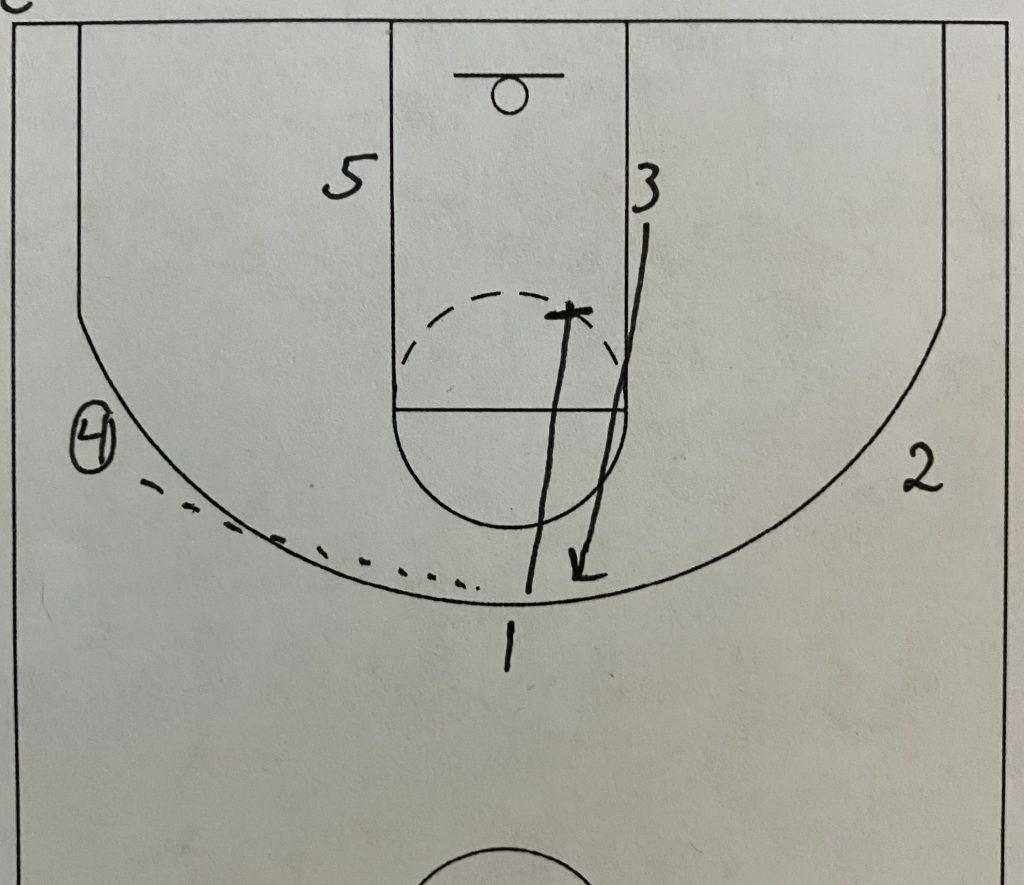
If the center(5) does not get the post entry pass, then the point(1) will downscreen for the forward(3). The forward(3) comes up to the top of the key and gets a pass from the big(4). This puts the ball back to the middle of the court and the point(1) down on the block.
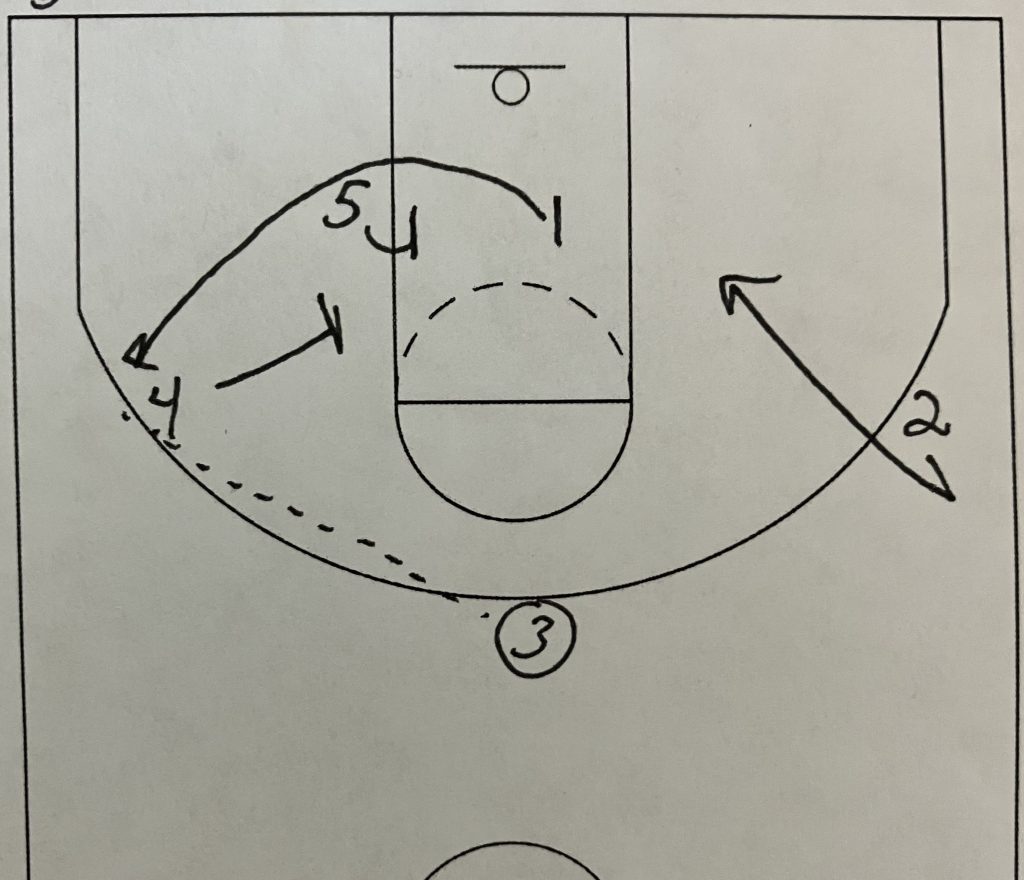
On the catch by the forward(3), the guard(2) runs a backdoor cut. The forward(3) gives a peek to the guard(2). This backdoor cut can give the offense a chance for a layup if the guard(2)’s defender get lazy of out of place on the backside of the play.
The backdoor cut also helps with the timing of the play. The peek by the forward(3) can help shift the defense and gives the time for the point(1) to come back across the floor.
The point(1) is running off of a stagger screen set by the center(5) and big(4). The forward(3) will peek and then turn back waiting for the point(1) to clear the stagger screen. The point(1) comes off of the stagger screen for a catch and shoot chance.
Another Option
Instead of the guard(2) running a backdoor cut, the guard(2) can come down and set a screen for the point(1). This gives the play a floppy action giving the point(1) the option of using a stagger screen by the big(4) and center(5). Or the point(1) can run to the backside using the single screen by the guard(2). A floppy action can be difficult to guard for the defense.
Conclusion
A good shooting point guard is a great tool for an offense. A team should try and get them some open looks without them having to create all their own shots. This play starts with a small to big post screen to possibly get an easy post entry. If that is not open, then the point guard is using a stagger screen or a floppy option to get open on the wing.
This play gives the offense multiple options and multiple players to score the ball. The key is setting good screens to get the center(5) or the point(1) open. One good screen is going to get either the center(5) or the point(1) open for a shot.
And if the play does not work, then the offense is back into the 3-out 2-in setup with the guards back on the outside and the post on the inside. This gives the offense the chance to move right into a motion offense should the play not work. By getting back into the starting setup, the offense can move right into another option should this quick hitter not work.

